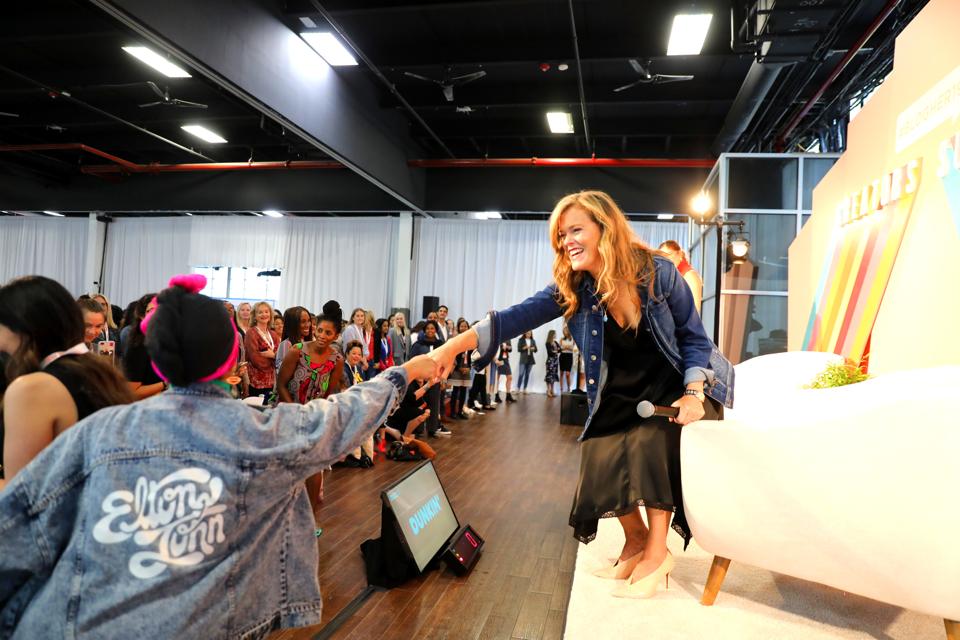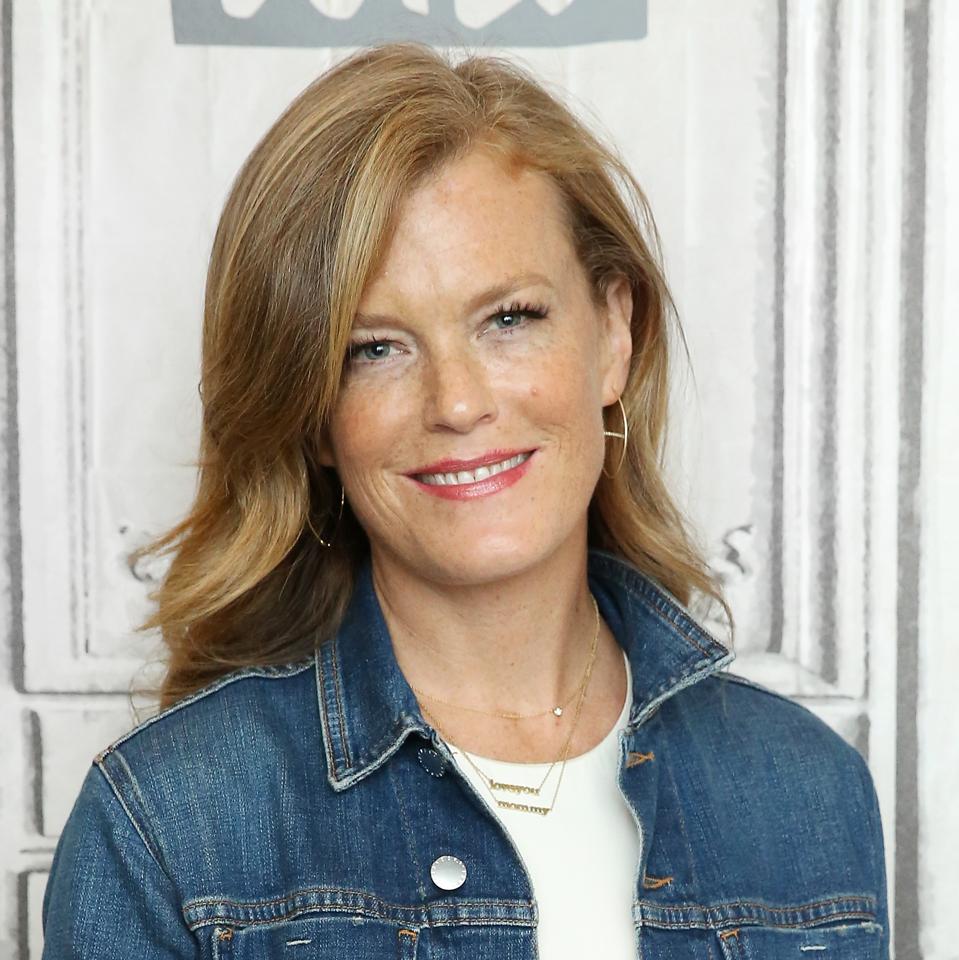
Samantha Skey was born with “competition in her blood.” Her father was a tri-varsity athlete and her mother coached multiple sports, including lacrosse, which Skey played during her youth and at college.
The New Jersey native is now one of a handful of female CEOs leading a U.S. media company. Skey credits the sporting world with the skills needed to ascend the corporate ladder.
“The dynamics were so instrumental in shaping my thinking about how to collaborate, how to lead, and how to recognize they can coexist,” she says.
Skey runs SHE Media, which positions itself as a “mission-driven digital media company created by and for women.” Through its portfolio of sites like SheKnows, STYLECASTER, and #BlogHer, among others, the company boasts some 60 million unique visitors per month, according to ComScore, and has more than 350 million social media followers.
Skey talks about her rise to senior business leadership, the importance of focusing on profits, people and purpose, and her tips to overcome anxiety around public speaking.
Should young women participate in sports as much as young men have in the past?
So much comes out of endeavoring to win as a team; everyone should participate in team sports. But if they don’t feel like an athlete, it doesn’t have to be sports. It could be other team competitions.
You began your career working in sales. How did you become a CEO?
Being a competitive athlete make sales work really well. You’re used to competing to win.
One of the core reasons I was able to travel from sales to marketing operations to a CEO position is that I’m in digital. I started in interactive in ’95. If you were in digital in the ’90s, you got all this credit because no one else was digital.
It was like, “I’ve got a whole year of experience.” That was more than the next guy.

NEW YORK, NY – AUGUST 06: CEO of SheKnows Media Samantha Skey visits Build Studio to discuss … [+]
WIREIMAGE
Your early resume reads like a millennial’s would now. You worked for Disney and several digital startups. An 18-month job changeover is common today, but that wasn’t always the case.
I was one of very few people who worked in digital sales and marketing in the ‘90s. We were given so much accountability, so young. It was, “You’re looking for a director of sales at Disney? You’ve got three 25-year-olds to pick if you want someone with experience.”
How many of those three were women?
None. At Disney, we were adjacent to ESPN—which was all very cool guys. They all played sports. It was a very intense environment of great people. But yeah, definitely guys.
How did you start with SHE Media?
Once I was going to pass 40, I didn’t want to hop around to a bigger title, more money or a cooler company. I wanted to figure out how to build a lasting career that I could do ‘til I die. It took me a while to find SHE Media.
How did you find it?
Philippe [Guelton], the CEO at the time, was an old collaborator. We worked together on Elle Girl, a brand I was really passionate about. There was an understanding between us. He was on-board with the idea of bringing a purpose orientation into women’s media.
You’re known for believing in the triple bottom line: people, purpose and profits.
If what I’m doing isn’t making the world a slightly better place, I wouldn’t be able to sell myself on the time and work commitment. That’s really important to me.
But I do not want to work for a nonprofit. I like having profit as my guide. It’s important for women to succeed in profit-driven companies.
Why?
Because the world is run by profit, not purpose, sadly.
How do you find purpose in your CEO work?
I’ve published our wage metrics around gender and race. We publish our representation of speakers onstage at #BlogHer. We have a commitment to a minimum of 50% women of color on any stage. Composition of workforce is another published metric, ensuring that we have no wage gap based on anything other than title.

NEW YORK, NY – AUGUST 09: Rachel Terrace, Tuffany Warren, Samantha Skey and Uzo Aduba attend the … [+]
GETTY IMAGES
As women are moving into more business management roles, is the nature of leadership changing?
It’s a complicated question. There’s an assumption that women work a certain way. Some of that plays out. Some of it’s probably sexist.
There is a different point of view coming from anyone who’s in a leadership position who’s ever felt like a minority. Yes, corporations might change as a function of having more women and people of color at the helm.
You were named CEO of SHE Media about a year and a half ago. What’ve you learned about being a CEO?
You can’t blame anyone else. My team is incredibly accountable, but I did something wrong if we miss a target. If they win, it’s their win—and it’s our win collectively. But the fail does come back to me.
You do a lot of public speaking. Does that come naturally?
I’ve always felt anxious on stage. It’s much easier for me one-on-one.
Are you introvert or an extrovert?
I’m one of those hybrid things, an extroverted introvert. My husband happens to be a psychiatrist. Apparently, I overcompensate to such a degree that most people think I’m much more extroverted and confident than I am.
How do you overcome onstage anxiety?
Preparation helps. If I really know what I want to say, it’s easier. I mostly speak at places where I like the people and trust the audience.
There are times when a female speaker is judged differently than a man. Have you experienced that?
Yes. And I’ve leveraged it sometimes.
How?
I can use fashion. I get my hair and makeup done before I’m speaking. That gives me more confidence.
It’s amazing the degree to which our appearances matter, women in business.
Is that a double standard that’s changing?
There are more models that are allowed, for sure. If the ‘80s was the power suit, which was like, “I’m more powerful than you because I’ve got more shoulder pads,” now the internet brought jeans as a part of a uniform.
There’s a lot more diversity in terms of beauty. This is something we celebrate a lot at #BlogHer. What is beautiful among women has changed.
But no one has ever commented on [former US Secretary of Defense] General James Mattis’s appearance when he’s giving a speech.
Everyone’s judged more because of social media. So, there’s more opportunity for us to publicly judge anyone. On social media, you’re often responding to an image or a look—and there’s a lot of gotcha moments. I think we’re all looking at people—their physical person—more often.
Certain industries may have higher standards for men. [Former CBS CEO] Les Moonves had to dress a different way than General Mattis.
We identify with the uniform and you create your own uniform.
I like fashion and the diversity of beauty that’s emerging with more body confidence, body positivity and an understanding of different beauty cultures. I don’t doubt that men are not being judged that way, but women are starting to use it as a power.
[“source=forbes”]







